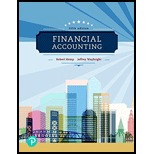
Concept explainers
Which duties should be segregated in the purchasing process? Why? That is, what could go wrong if two or more of those duties are not segregated?
Determine the duties that should be segregated in the purchasing process and also explain the reasons for the segregation. Also, explain the consequences if two or more of those duties are not segregated.
Explanation of Solution
An individual in an organization who has been entrusted with the responsibility of placing orders for purchase of goods is known as purchasing agent. The purchasing agent should neither receive goods nor approve payment. If the purchasing agent is authorized to receive goods or approve payment, the agent would carry out fraudulent activities such as the ordered goods could be shipped to the home or side-business of agent or the agent and suppliers can have collusion among them approving the payment and splitting the excess money.
The person responsible for making payments should not be given the responsibility of signing checks or the custody of goods purchased.
Want to see more full solutions like this?
Chapter 7 Solutions
Financial Accounting (5th Edition) (What's New in Accounting)
- I need correct option general accountingarrow_forwardNonearrow_forwardSuppose that Treyton Manufacturing has annual sales of $6.30 million, cost of goods sold of $3.20 million, average inventories of $1,500,000, and average accounts receivable of $600,000. Assuming that all of Treyton's sales are on credit, what will be the firm's operating cycle?arrow_forward
- Business Its Legal Ethical & Global EnvironmentAccountingISBN:9781305224414Author:JENNINGSPublisher:Cengage
 Managerial Accounting: The Cornerstone of Busines...AccountingISBN:9781337115773Author:Maryanne M. Mowen, Don R. Hansen, Dan L. HeitgerPublisher:Cengage Learning
Managerial Accounting: The Cornerstone of Busines...AccountingISBN:9781337115773Author:Maryanne M. Mowen, Don R. Hansen, Dan L. HeitgerPublisher:Cengage Learning College Accounting, Chapters 1-27 (New in Account...AccountingISBN:9781305666160Author:James A. Heintz, Robert W. ParryPublisher:Cengage Learning
College Accounting, Chapters 1-27 (New in Account...AccountingISBN:9781305666160Author:James A. Heintz, Robert W. ParryPublisher:Cengage Learning  Survey of Accounting (Accounting I)AccountingISBN:9781305961883Author:Carl WarrenPublisher:Cengage LearningPrinciples of Accounting Volume 2AccountingISBN:9781947172609Author:OpenStaxPublisher:OpenStax CollegeBusiness/Professional Ethics Directors/Executives...AccountingISBN:9781337485913Author:BROOKSPublisher:Cengage
Survey of Accounting (Accounting I)AccountingISBN:9781305961883Author:Carl WarrenPublisher:Cengage LearningPrinciples of Accounting Volume 2AccountingISBN:9781947172609Author:OpenStaxPublisher:OpenStax CollegeBusiness/Professional Ethics Directors/Executives...AccountingISBN:9781337485913Author:BROOKSPublisher:Cengage





